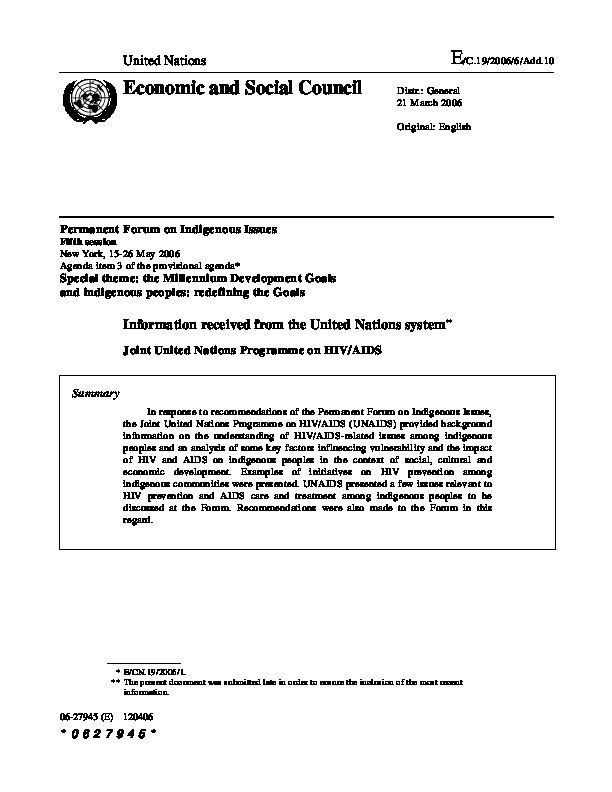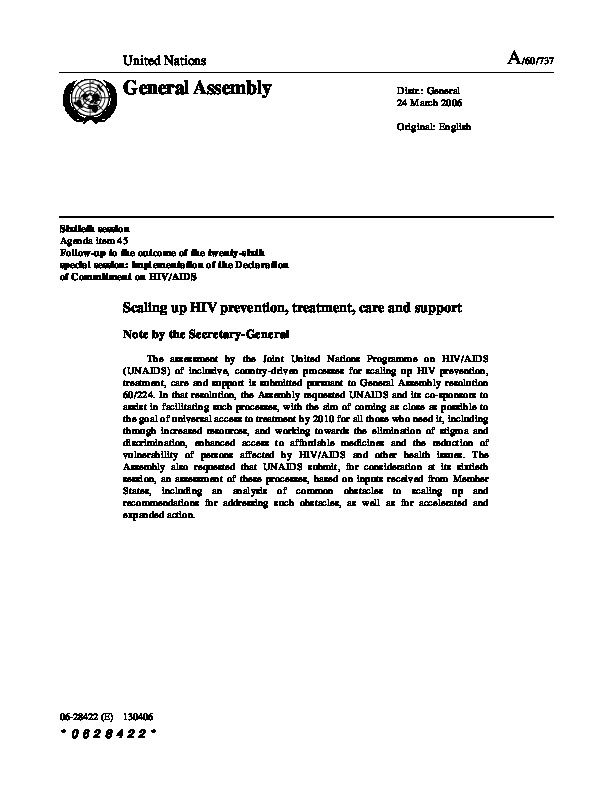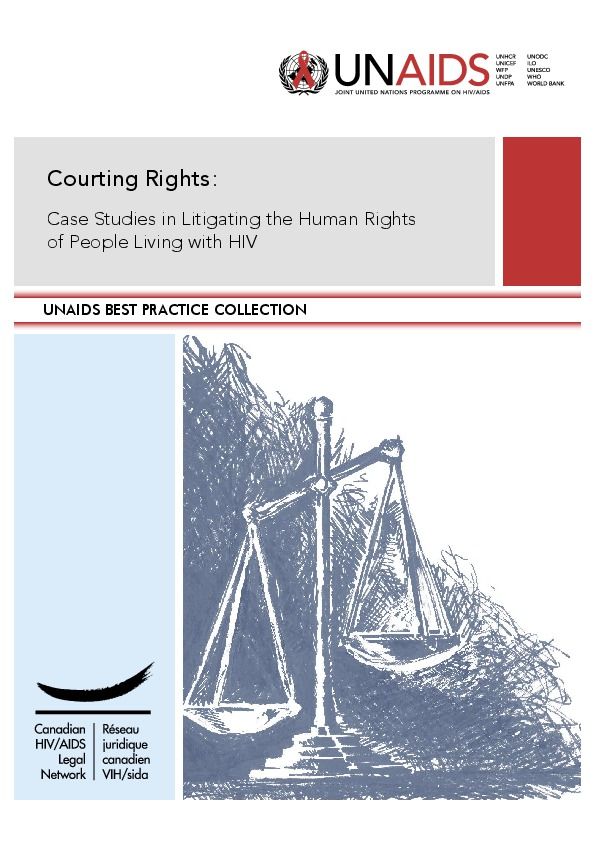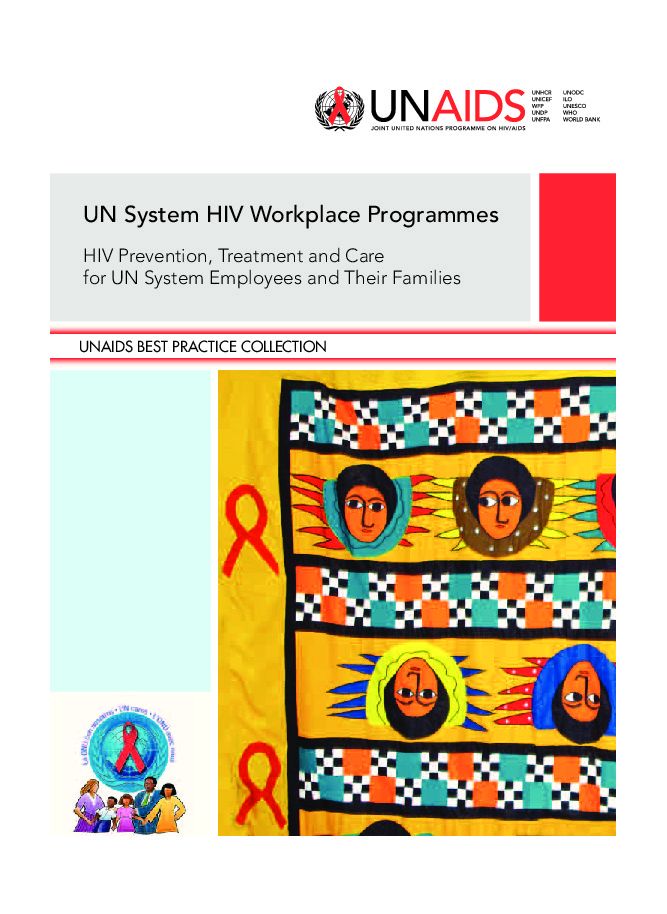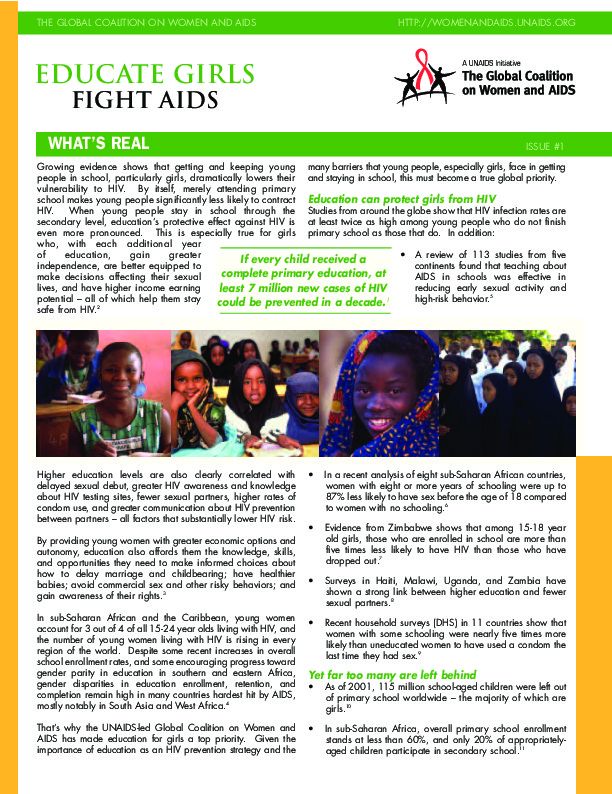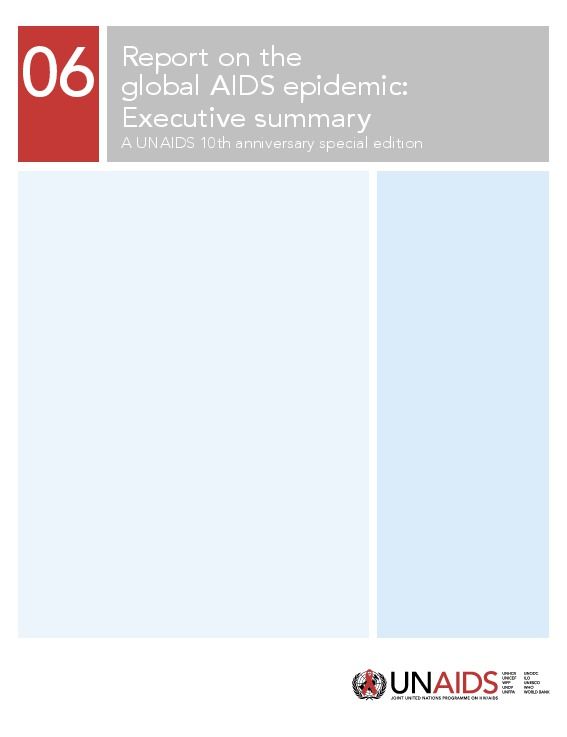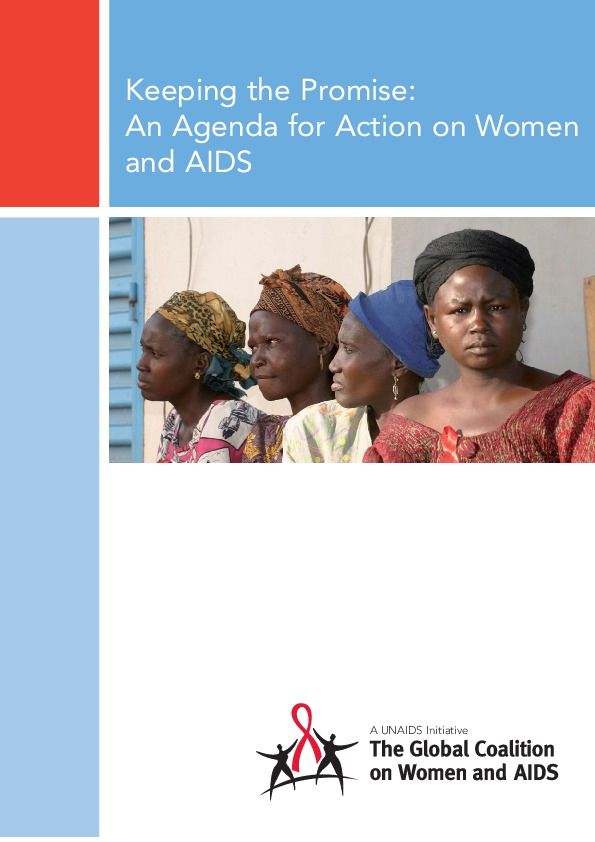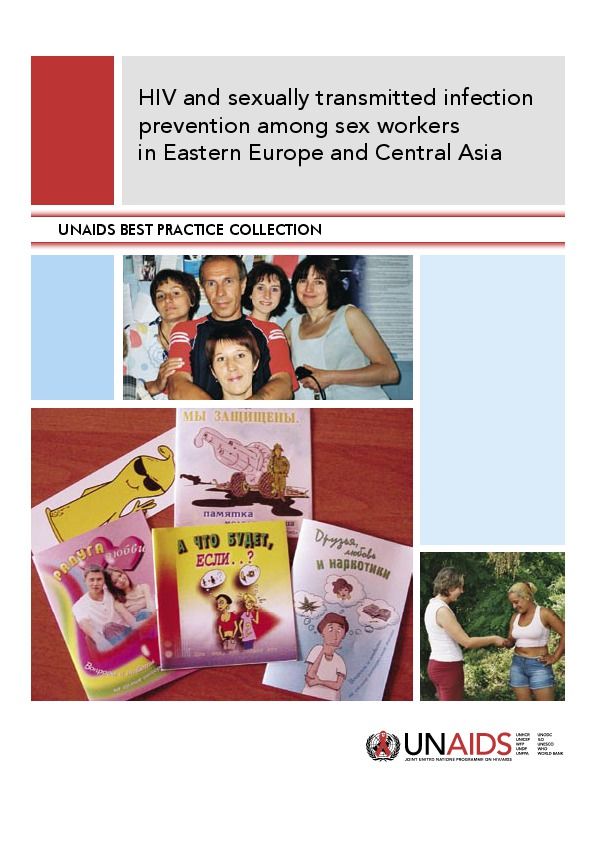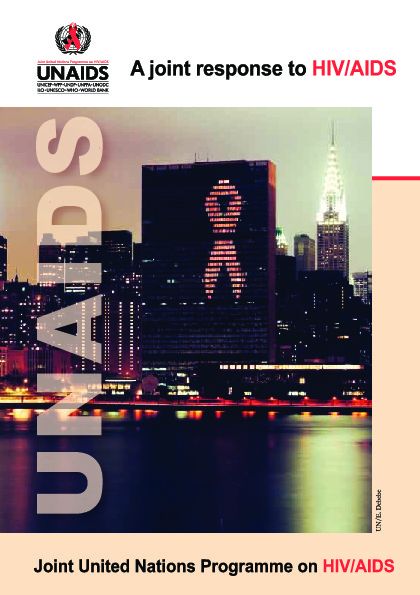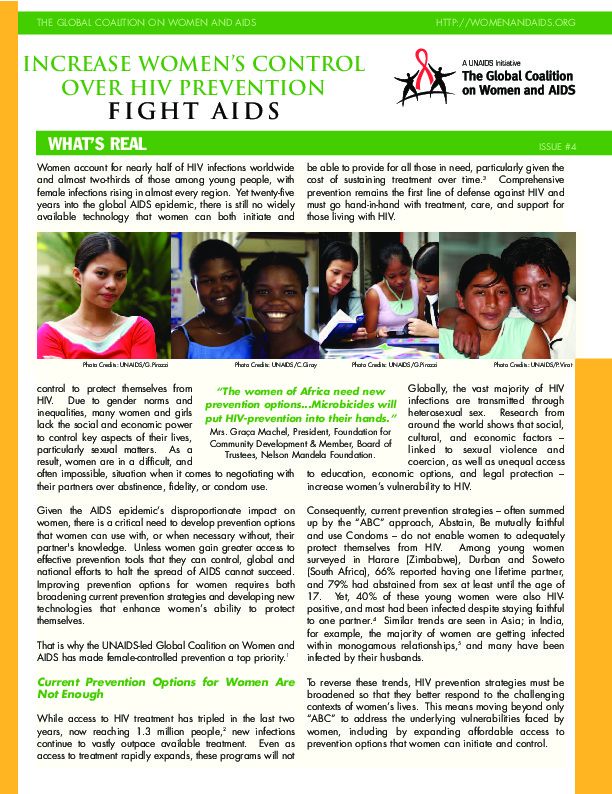Documents
Towards universal access: assessment by the Joint United Nations Programme on HIV/AIDS on scaling up HIV prevention, treatment, care and support - Note by the Secretary-General
20 April 2006
This report is the submission at the sixtieth session of the UN General Assembly of the assessment of country-driven processes for scaling up HIV prevention, treatment, care and support, with the aim of coming as close as possible to the goal of universal access to treatment by 2010 for all those who need it.
Documents
Courting Rights: Case Studies in Litigating the Human Rights of People Living with HIV
01 May 2006
As the case studies in this volume demonstrate, the law can be protective of human rights, but can also impede their realization. Over the years, people living with or affected by HIV have sometimes successfully claimed the protection of the law. In other instances, courageous
activists have challenged the law to embody the human rights protections they deserve. This volume presents 30 summaries of court or tribunal proceedings aimed at defending or securing the human rights of people living with, or vulnerable to, HIV. With an emphasis on cases from
developing countries, this volume examines key litigation efforts to advance a “human rightsbased approach” to HIV on three fronts: discrimination, access to treatment, and prevention and care for prisoners. Understanding the ways in which litigation has been used in the struggle for human rights, successfully or otherwise, helps legislators, jurists, advocates and policymakers to understand and use the law optimally in the response to AIDS.
Documents
UN System HIV Workplace Programmes HIV: Prevention, Treatment and Care for UN System Employees and Their Families
10 May 2006
This Best Practice Case Study captures lessons learned, keys to success, and challenges that must be met if there is to be optimal access to treatment and care for UN staff and their dependents. It describes UN workplace programmes in Cambodia, Ethiopia, Kenya and Rwanda where multi-disciplinary teams are discovering the power of leadership and the value of multidisciplinary interagency approaches.
Documents
Educate Girls. Fight AIDS
10 May 2006
Growing evidence shows that getting and keeping young people in school, particularly girls, dramatically lowers their vulnerability to HIV. By itself, merely attending primary school makes young people significantly less likely to contract HIV. When young people stay in school through the secondary level, education’s protective effect against HIV is even more pronounced. This is especially true for girls who, with each additional year of education, gain greater independence, are better equipped to make decisions affecting their sexual lives, and have higher income earning potential – all of which help them stay safe from HIV.
Documents
Report on the global AIDS epidemic: Executive summary
16 May 2006
Documents
Keeping the Promise: An Agenda for Action on Women
and AIDS
16 May 2006
The Global Coalition on Women and AIDS was launched by UNAIDS in 2004 to respond to the increasing feminization of the HIV epidemic and a growing concern that existing AIDS strategies did not adequately address women’s needs. A loose alliance of civil society groups, networks of women living with HIV and United Nations agencies, the Coalition works at global and national levels to advocate for improved AIDS programming for women and girls. It focuses on several key issues: preventing new HIV infections by improving access to reproductive health care; promoting equitable access to HIV care and
treatment; ensuring universal access to education; securing women's property and inheritance rights; reducing violence against women; ensuring that women’s care work is properly supported; advocating for increased research and funding for female-controlled HIV prevention methods; promoting women's leadership in the AIDS response.
Documents
HIV and sexually transmitted infection prevention among sex workers in Eastern Europe and Central Asia
18 May 2006
The aim of this study is to describe the experiences of and challenges faced by five nongovernmental organizations in Eastern Europe and Central Asia, which developed effective practices and implemented promising HIV and sexually transmitted infection prevention programmes for sex workers and their clients. The programmes’ key objective was to decrease sex workers’ vulnerability by improving their overall well being and supporting their empowerment. All organizations operate in low-resource settings and their experiences can be helpful in initiating and moving forward similar projects.
Documents
Newsletter: The Global Coalition of women and AIDS – issue 4
19 June 2006
Women account for nearly half of HIV infections worldwide
and almost two-thirds of those among young people, with
female infections rising in almost every region. Yet twenty-five years into the global AIDS epidemic, there is still no widely available technology that women can both initiate and control to protect themselves from HIV.

